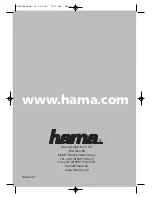
Chapter 9 AMTOR Operation
“
n
” is a hex value $00-7F, default $5F (underscore). This is the character that the DSP displays when it receives a
corrupted or bad character in Morse, ARQ, FEC, PACTOR, NAVTEX or TDM. You may want to set this character
to $2A (asterisk), $07 (bell), $20 (space) or $00 (null)—whichever works best for you.
ERRCHAR
ON
or
ER
Y
restores the default.
FEc
Immediate Command
Mode: AMTOR mode B
Host: FE
FEC
starts an AMTOR FEC (mode B) transmission. Use
FEC
for CQ calls in AMTOR. Be sure to include your
SELCALL and
MYIDENT
code in your CQ message so that the other station can call you back in ARQ.
FEC is necessary for all roundtable AMTOR contacts. When operating in FEC, let your DSP begin each
transmission with 3-5 seconds of idling; the RTTY practice of transmitting a line of RYRYRY is unnecessary on
FEC.
You can signal the end of your FEC transmission by typing the changeover sign “+?,” recognized world over as the
RTTY equivalent of “KKK.” However, in FEC “+?”
isn’t
a software command. You still have to unkey your
transmitter (with the
RECEIVE
or
CWID
characters, or the
RCVE
command) as you would in RTTY.
GUSERS
n
Default: 0
Mode: packet, AMTOR, PACTOR
Host: GU
“
n
”
0 to 3 specifies the maximum number of users allowed to use your node.
GUSERS allows up to
n
number of stations to connect to your
MYGATE
call. The argument “
n
” may be 0-3, with
zero meaning no station can use your node. Alternatively,
n
can be thought of as the maximum number of
pairs
of
stations which may be connected through your Gateway.
Your must have your
MYGATE
call entered and GUSERS set to a number greater than 0 to enable the DSPs node
function.
HEReis
n
Default: $02 (
CTRL-B
)
Mode: Baudot, ASCII, AMTOR and PACTOR
Host: HR
“
n
”
Is the hex representation ($01-$7F) of the character that causes the
AAB
string to be sent in the middle of
transmitted text.
If you want to send your own
AAB
string for identification during a transmission, simply enter the
HEREIS
character.
Id
Immediate Command
Mode: AMTOR/ASCII/Baudot/Packet
Host: ID
In AMTOR, the
ID
command acts like the
RCVE
command only it adds a Morse ID before going back to receive.
In ASCII and Baudot, the
ID
command causes a Morse ID to be sent much like an immediate version of the CWID
character (
CTRL-F
). Because the
ID
command is immediate, the message “
Transmit Data Remaining
” will
be displayed if any unsent data remains in the transmit buffer. To clear the data from the buffer, enter
TC
at the
cmd:
prompt.
In packet,
ID
is an immediate command that sends a special identification packet. The
ID
command allows you to
send a final identification packet when you take your station off-the-air. (
HID
must also be set
ON
). The
identification consists of a UI-frame, with its data field containing your
MYALIAS
(if it’s entered),
MYCALL
, and
the word “digipeater”. The
ID
packet is sent only if your DSP has digipeated any transmissions since the last
automatic identification.
September, 05
9-17
Summary of Contents for DSP-232
Page 120: ...Chapter 6 GPS Applications September 05 6 1...
Page 138: ...Chapter 7 Maildrop Operation 7 18 September 05...
Page 158: ......
Page 159: ...Chapter 8 ASCII and Baudot Operation September 05 8 1...
Page 185: ......
Page 186: ...Chapter 9 AMTOR Operation September 05 9 1...
Page 198: ......
Page 199: ...Chapter 10 Morse Operation September 05 10 1...
Page 207: ......
Page 208: ...Chapter 11 SIAM and NAVTEX Operation September 05 11 1...
Page 230: ......
Page 231: ...Chapter 12 PACTOR Operation September 05 12 1...
Page 240: ...Chapter 13 Troubleshooting September 05 13 9...
Page 254: ...Chapter 13 Troubleshooting 13 9...
Page 256: ...DSP 232 Manual Addendum September 05 AD 2...
Page 259: ...Appendix A Radio Connections Radio Connection Diagrams September 05 A 3...
Page 260: ...Appendix A Radio Connections A 4 September 05...
Page 261: ...Appendix A Radio Connections September 05 A 5...
Page 262: ...Appendix A Radio Connections A 6 September 05...
Page 263: ...Appendix A Radio Connections September 05 A 7...
Page 267: ...Appendix D Mailbox Upgrade September 05 D 2...
Page 268: ...Appendix E Schematics and Pictorial September 05 E 3...
















































